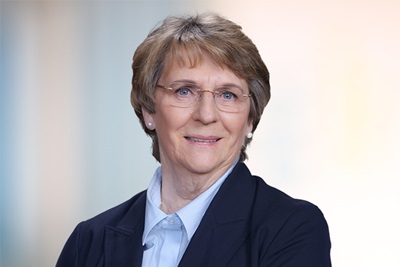Private equity firm Roark Capital Group holds investments in a number of familiar brands, including Arby’s, Subway, Buffalo Wild Wings—and Primrose Schools, a national child care chain.
Families seeking care for their young children may turn to a relative, a neighbor, or child care programs based out of homes, centers, public schools, or places of worship. That includes larger child care franchise businesses like Primrose, Bright Horizons, and KinderCare, which collectively served about 1 million children in 2022, according to the New York Times.
Some are publicly traded and have attracted private equity backers, like Roark Capital, prompting concerns from some over shareholders exerting pressure for profit at a time when many parents are already struggling to afford child care.
A panel of child care experts, including Buffett Early Childhood Institute Director of Policy Linda Smith, weighed in during a March 4 webinar on for-profit child care hosted by the Campaign for Grade-Level Reading.
 Linda Smith
Linda SmithPanelist Elliot Haspel, a child care policy writer and senior fellow at think tank Capita, has written extensively on the subject, including a recent piece on the sudden closures of several Guidepost Montessori locations.
“I’m absolutely sure there are high-quality programs that are owned by investors,” he said. “But when we’re talking about a system that is for the public good, a system that is serving everyone, a system that parents and children and educators can rely on … having that profit motive seems to me sort of inherently to be counter to the goals and the visions of a universal system that works well for everyone involved.”
Haspel said states could impose “guardrails” on for-profit child care programs by tying public funding to conditions like limits on executive compensation and payouts to shareholders.
Others argued that singling out for-profit child care would not solve the problems inherent to America’s child care system: too few spots, high costs for parents, and low pay for early educators.
Smith has been working on calculating the child care gap in states—the difference between how many children and families need care and the number of available spots.
“We have not thousands, but millions of children who, by most estimates, would need some kind of child care who don’t have access to it,” Smith said. “I think we’re boxing at shadows here in some ways. We need more child care in this country, we need high-level, quality care in this country, we need a better paid workforce.”
Enriching classroom environments and highly qualified teachers should be the standard for all child care programs regardless of tax status, Smith said. There are programs across the nonprofit and for-profit continuum with under-prepared teachers and high turnover rates.
Earlier in her career, Smith served as the director of the Office of Family Policy for the Secretary of Defense, where she was one of the primary architects of the military’s widely lauded child care program. By the time she left, 100% of the Defense Department’s child care programs had been nationally accredited.
To achieve that, the military invested appropriated funds directly into programs to offset the costs of a better paid, better prepared workforce without passing the costs on to parents. Smith said the key to quality is the quality of child care staff, and advocates and policymakers should focus their energy on how to finance that.
Marquita Davis, the chief academic officer for KinderCare, said the child care field is fragmented enough without pitting smaller and larger businesses against each other.
“Families are struggling to find affordable, quality early learning experiences,” Davis said. “And given this problem, it’s important for the field to unite. And I’m not talking about it in a Pollyanna kind of way, but to unite as a collective system to drive realistic, practical solutions to address the problem that we’re trying to solve.”
Erin Duffy is the managing editor at the Buffett Early Childhood Institute at the University of Nebraska and writes about early childhood issues that affect children, families, educators, and communities. Previously, she spent more than a decade covering education stories and more for daily newspapers.

